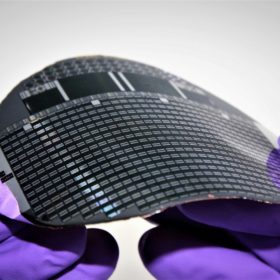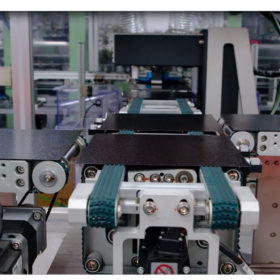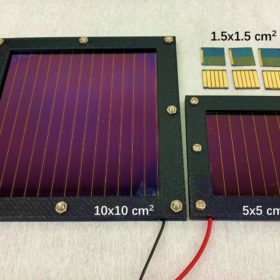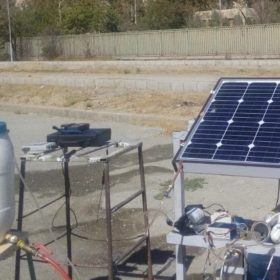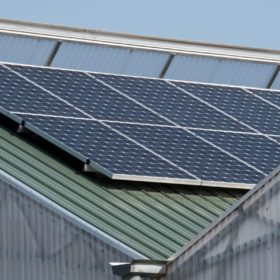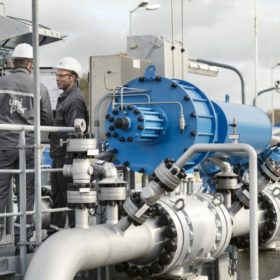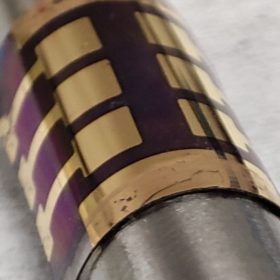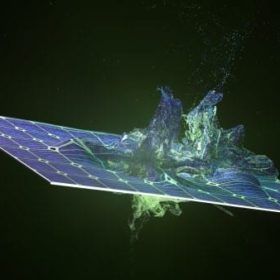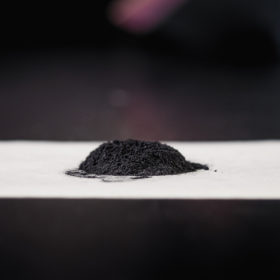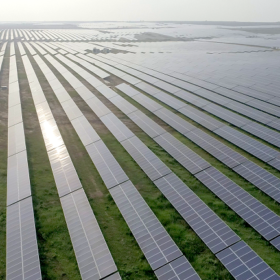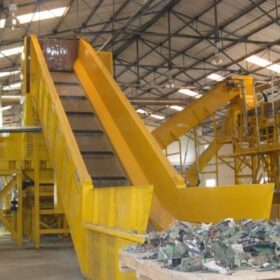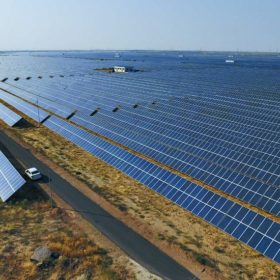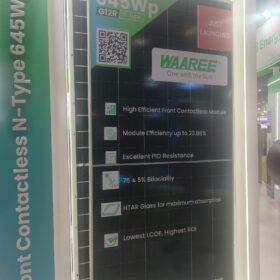Fraunhofer ISE unveils 68.9%-efficient III-V solar cell for laser energy transmission systems
The German research institute said the gallium arsenide cell has achieved the highest efficiency to date for the conversion of light into electricity.
1366 Technologies merges with Hunt Perovskite Technologies
U.S. thin-film manufacturer First Solar and Bill Gates-owned Breakthrough Energy Ventures (BEV) are among the investors in the new company, which is called CubicPV and is expected to develop multi-junction perovskite solar cells with efficiencies of around 30%.
New perovskite material for 23.5%-efficient solar cell
Researchers in Japan have found a new way to fabricate one of the most promising perovskite materials for PV application — the α-formamidinium lead iodide known as α-FAPbI3. With a pre-synthesized version of this material, they were able to produce a cell with a power conversion efficiency of 23.5% and a lifespan of more than 2,000 hours.
Stand-alone brackish water desalination system powered by photovoltaic-thermal unit
The BWRO unit, which has a treated water production capacity of around 11.80 L/h, was built with a pre-filtration module, a high-pressure DC pump, an RO module, and a post-treatment module. The PVT system was designed to meet the energy requirement of a high-pressure DC pump and a diaphragm-type circulation pump utilized to circulate soft water beneath the PV module for the active cooling of the panel itself.
Gravity-based storage for distributed solar
An international research team has designed a residential solar-plus-storage system based on gravity. The system was built with a solar power generator, a bulk booster charge controller, an inverter, a solenoid device, a deep cycle battery, a pulley block, a geared motor, a microcontroller, and wire ropes. Its creators said the system is ideal for regions with high solar radiation. They found that, due to its high electrical requirements, the system needs to rely on high-power solar modules with an output of over 500 W.
Demand, policies, investment key to green hydrogen development
Ruchi Gupta is a research fellow at the University of Geneva’s Institute for Environmental Sciences. She focuses on how flexibility options, such as sector coupling with hydrogen production, can support renewable energy integration and decarbonize a wide range of sectors.
JSW Steel, CSIR-NCL, Scotland join India hydrogen alliance
JSW Steel will bring industry majors and the government together for hydrogen commercialization in the steel and cement sectors. CSIR-National Chemical Lab would work closely with the private sector on hydrogen development projects. Scottish Development International (SDI) brings the expertise from the implementation of large-scale hydrogen projects in Scotland.
Flexible perovskite solar cell with 21.0% efficiency, high durability
International researchers have placed a low-dimensional metal-halide perovskite capping layer on top of a metal-halide perovskite film to provide hermetically sealed encapsulation and enhanced photocarrier properties. The cell has a short-circuit current density of 23.5 mA.cm2, an open-circuit voltage of 1.15 V, and a fill factor of 0.779.
New process to recycle silicon, silver and glass from end-of-life PV panels
A €4.8 million EU-funded research project is aiming to develop a process that allows recovering all components of a photovoltaic module.
The long read: Dial manganese for battery stability
Often sidelined by nickel and cobalt when it comes to batteries, the metal manganese is finding proponents in science and industry – in particular, by those attempting to avoid supply and cost issues. Ian Morse reports on the role of manganese in battery cell production.
